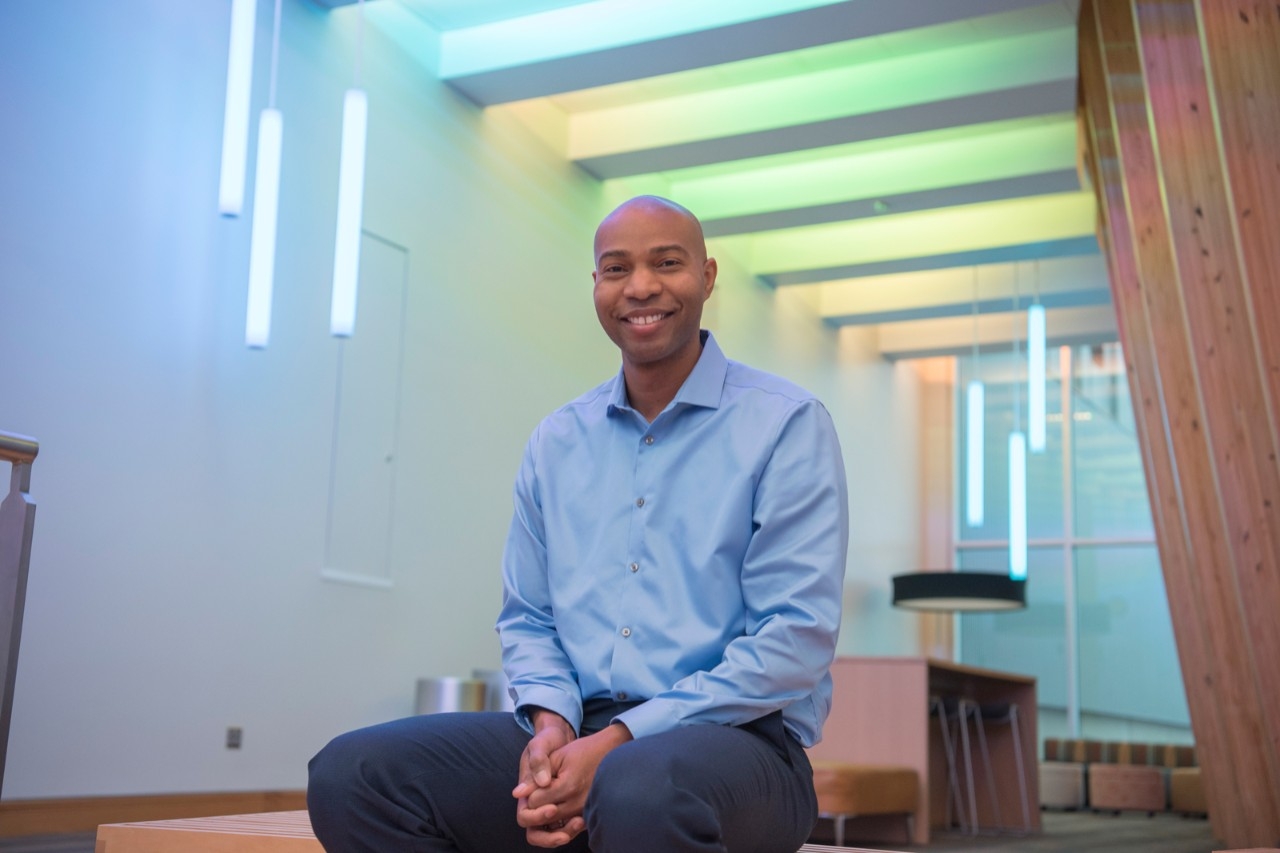


“3D scanners are great for creating models for 3D printing. The problem is that most are either too expensive or too low quality for good 3D printing. So I thought, ‘I’ll just create one myself.'"
Liggett credits his time at NKU to his success in his career at Etegent Technologies.
“The role that I play is one of the senior developers,” he says. “I’m a large part of the design and implementation, as well as setting a vision for where the application goes.”
Recently, Liggett has been working on an application that takes information generated while manufacturing and maintaining an aircraft and places it on a 3D model. All of the application’s information is stored automatically in the cloud.
“You can utilize a tablet by pulling up a 3D model of the area you’re inspecting. This allows you to view the defective area on the plane and the model at the same time,” he says. “You can track where you’re having increased areas of damage, instances of cracking or potential air bubbles. This software also helps identify any potential issues.”
When Liggett isn’t implementing new software for Etegent Technologies, he maintains his own company, Murobo LLC, which he founded in 2014.
The idea behind Murobo LLC started when Liggett purchased a 3D printer hoping to print everyday household items. He decided he needed a 3D scanner in order to create models from objects he had on hand but discovered they were much more expensive than the average customer could afford.
“3D scanners are great for creating models for 3D printing. The problem is that most are either too expensive or too low quality for good 3D printing,” he says. “So I thought, ‘I’ll just create one myself.’”
And so he did. Liggett built an original prototype—the ATLAS 3D—that generates high-resolution models in a short amount of time.
“ATLAS 3D works by illuminating an object with laser light and then using 3D triangulation to generate a point cloud for each location where the laser hits the model,” he says. “Neighboring points are then connected as triangles to form a 3D model.”
Liggett posted about inventing the ATLAS 3D in an online 3D printing forum, and the positive responses he received convinced him that opportunity existed for helping others create 3D scanners of their own. He sold 1,000 scanner kits in 30 days, and today, a few years later, sales remain strong.
“It was definitely an exercise in learning how to manufacture and deliver a product,” he says. “But I’m happy that years later this is still respected.”

